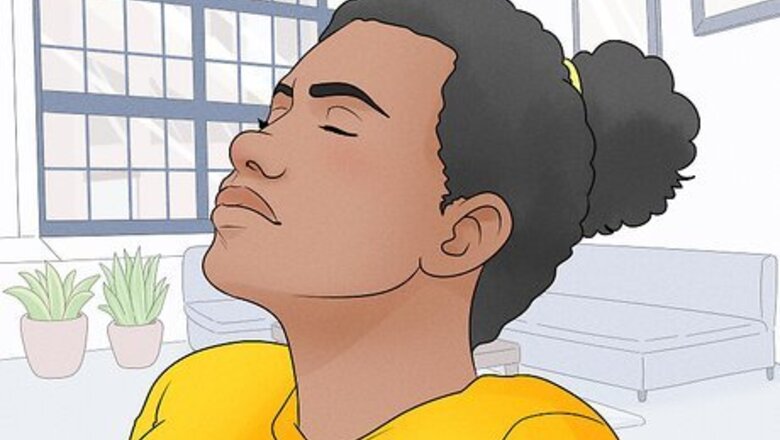
views
Take a few deep breaths.

Neurologist Eric Baron explains, "some common causes of shaky hands include excess caffeine, poor sleep, overexertion, and anxiety." Breathing helps you manage the anxiety and nerves that cause shakiness. Whenever you’re feeling nervous, close your eyes and focus on your breathing. Try “box breathing,” where you inhale through your nose for 4 seconds, hold your breath for another 4 seconds, and finally exhale through your mouth over 4 seconds. Take as many breaths as you need until you feel more relaxed. Usually within a few seconds, you won’t be as shaky. Your body releases adrenaline when you get nervous and the extra energy makes your hands shake. Shakiness of the hands is also known as tremor.
Support your wrist.
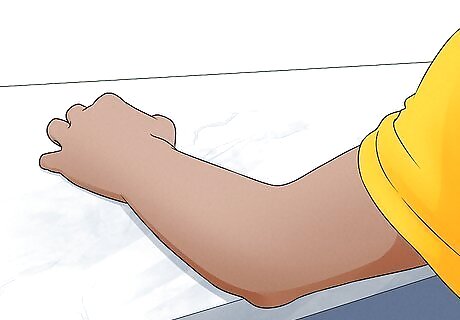
Rest your wrist on a table or on your other hand to keep it from moving. If your hand shakes while you’re holding something, hold onto your wrist with your non-dominant hand so you can support the weight better. Otherwise, try setting your wrist down against the edge of a table to keep your fingers from trembling. This works well if you need to do something precise with your hands, such as painting a small detail or threading a needle.
Try wearing wrist weights.

The extra weight around your wrists makes your tremors less noticeable. Go to an athletic store and get some ⁄4–⁄2 lb (110–230 g) weights that you can wrap around your wrists. Wear the weights as you do your normal daily tasks to develop your muscles and keep your hand stabilized.
Clench your hand into a fist.
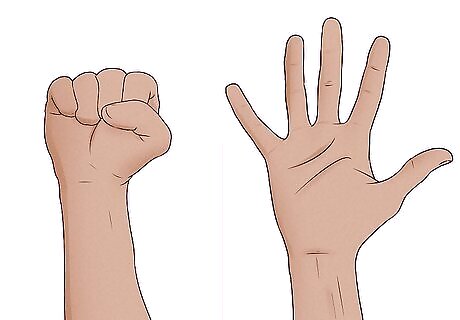
Maintain your dexterity by doing a few reps of this simple exercise. Make fists with both of your hands and gently squeeze them. Keep your fist clenched for 1 minute before spreading your fingers open as wide as you can. Do this up to 5 times a day with each hand. Try the tabletop fist by starting with your fingers pointing straight up. Bend your fingers at the first knuckle until they’re parallel with the floor. To make a claw fist, start with an open palm. Curl your fingers so the tips touch the top of your palm. Don’t bend your first set of knuckles where your fingers connect to your hand.
Squeeze a stress ball.
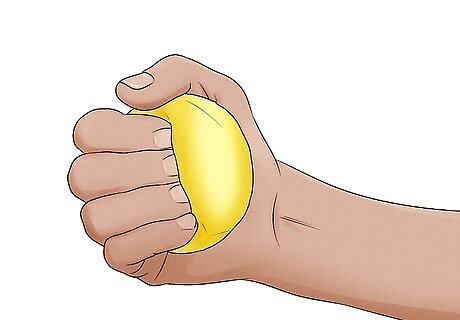
Improve grip strength and stability with some quick squeezes every day. Place a soft ball in your palm and try squeezing it as hard as you can without causing pain. Hold the ball tightly in your grip for 3–5 seconds before relaxing your fingers again. Repeat the exercise 10–12 times for each hand at least 2 or 3 times per week. If you don’t have a stress ball, you can also use a tennis ball or grip strengthener. Ask your doctor if you can safely do the exercise if you have arthritis since it could make your symptoms worse.
Touch your fingertips to your thumb.

Cycle through your fingers with this exercise to work your hand muscles. Start with your palms facing your body. Touch the tip of your index finger to the pad of your thumb and then relax. Then, one at a time, touch your middle, ring, and pinky to your thumb. When you reach your pinky, go back through your fingers again so you end on your index finger. Do 5 reps with each hand at least 3 times a day to strengthen your hands. This exercise helps your stability and grip strength.
Practice some wrist bends.

Strengthen your wrists with a few sets of side-to-side bends. Place your palm flat on a table, keeping your fingers and wrist straight. When you’re ready to start, bend your wrist as far to the left as you can. Hold the position for 2 seconds before relaxing. Then bend your wrist to the right as far as it is comfortable. Count to 2 before going back to the starting position. Aim to do 5 reps per hand 3 times throughout the day. For a slight variation, ball your hand into a fist. Rest your hand and wrist so your pinky is against the table surface. Bend your wrist in toward you for 2 seconds before relaxing.
Cut back on caffeine.

Too much caffeine leaves you feeling jittery and shaky. Limit how much coffee, tea, or soda you have in your diet. Instead, try half-caff coffee or replace your drinks with low-caffeine or caffeine-free alternatives so you’re less likely to have tremors during the day. If you’re trying to overcome shakiness from too much caffeine, drink some water to flush out your system or take a walk to burn off the energy. If you’re looking for an easy way to get energy without having caffeine, try having an apple instead. If you normally have a lot of caffeine, avoid completely cutting it from your diet since it could cause withdrawal symptoms, such as headache, irritability, and drowsiness.
Stop drinking alcohol.

Heavy alcohol use and withdrawals both cause tremors. Some people drink to try and relieve their tremors, but alcohol will only make the shakiness worse over time. Stick to non-alcoholic drinks so you can manage your condition better. If you’re a heavy drinker, look for medical treatment when you quit since withdrawals could potentially be life-threatening.
Eat a meal every 4–6 hours.
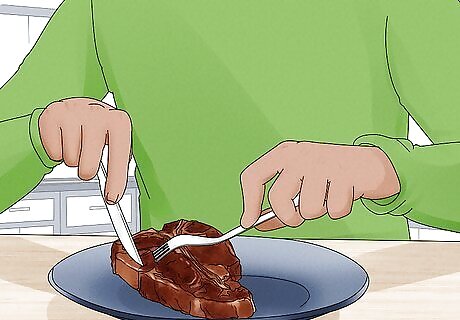
Skipping a meal makes you more prone to shakiness. Sit down for at least 3 balanced meals each day that contain protein, starch, and some healthy fats. Choose options like grilled chicken, whole-wheat bread or pastas, baked potatoes, and green vegetables. If you just need a quick bite between meals, try having some crackers, nuts, or a piece of fruit. Try to eat something as soon as you first notice you’re hungry so you can keep your energy levels up and prevent tremors.
Get 7–8 hours of healthy sleep.
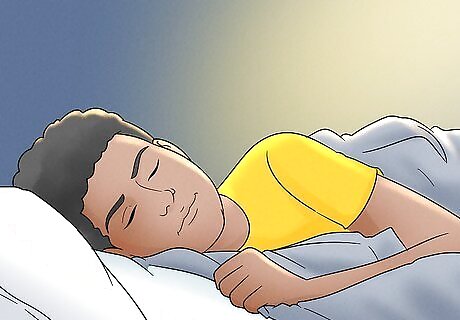
Sleep deprivation leads to tremors. Try to get to sleep around the same time every night so you can develop a regular bedtime routine. Limit your use of screens right before you go to bed and make your bedroom as dark as possible so you can get more restful sleep. Aim to get at least 7 or more hours of sleep every night if you’re an adult or 8–10 hours if you’re a teenager. Avoid having heavy meals within 2–3 hours of bedtime since you won’t be able to sleep as well.
Relieve stress with relaxation techniques.
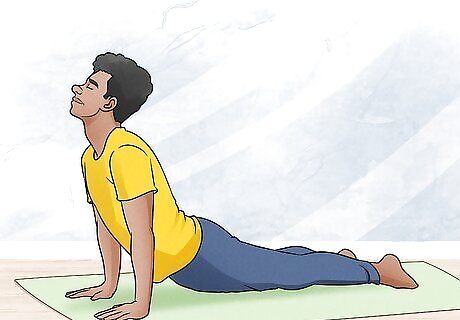
Yoga and breathing exercises work to manage your stress levels. We know that you can’t avoid all sources of stress, but try out some relaxation techniques when you’re overwhelmed. Take a few deep breaths or try out a few simple yoga stretches. As long as you have ways to mitigate your stress, you’re less likely to feel tremors from the situation. You can also try biofeedback, which is a type of therapy that helps you recognize and control your body functions using sensors. Talk to a doctor or therapist to see if it’s right for you.
Talk to your doctor about prescriptions.

Neurologist Eric Baron reminds those experiencing tremors, "if shaky hands are affecting your ability to use your hands (such as write, eat, or drink), you can take medications to lessen the tremors." Some medications cause tremors while others can help get rid of them. Reach out to your doctor and let them know that you’re having tremors in your hands that interfere with your daily life, especially if you can’t determine the cause. If you’re currently on prescriptions for seizures, cancer, or antidepressants, they may be causing your tremors and your doctor may recommend a new medication. If your tremors aren’t from medications, your doctor may run a few blood tests or a CT scan to determine the cause. Then, they might give you a prescription to treat your condition. Common prescriptions that help tremors include beta blockers, primidone, gabapentin, and clonazepam. While hand tremors are more common and benign when you’re elderly, seek medical attention if you’re younger and otherwise healthy.















Comments
0 comment